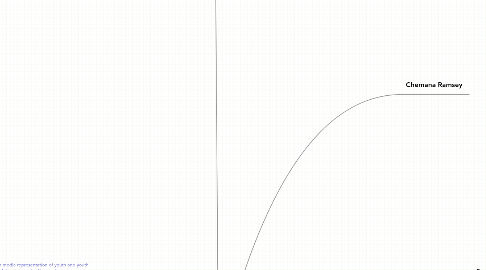teenage drinking
by chemana Ramsey


1. Chemana Ramsey
2. Ethnicity
2.1. Some groups within the media are represented negatively. For example there are channels which will be dedicated to specific minority ethnic groups. Some channels will involve ethnic minority groups and how they reflect the lived experience and culture of minority ethnic groups . These are generally appreciated by their target audience
2.2. Moore et al.(2005) looked at 5 stereotypes which were commonly used to poetry black people in the media . As a criminal. Blacks often used to represent criminals , whites not seen in this way a threat-tabloid scares about immigrants and asylum seekers taking jobs and using the welfare state .Abnormal- seen as odd e.g. arranged marriages unimportant-priority given to the reporting issues affecting white people . Dependent-' Coup-war-famine-starvation syndrome with little discussion of their exploitation by western countries
2.3. Dijk(1991) found evidence of unconscious racism when looking at ethnic minority groups. Lack of reference to quotes from minority ethnic sources resulted in biased reporting that only showed a white perspective on news story
3. Age
3.1. Osgerby(2002) studied shifts in media representation of youth and youth culture. it showed wider cultural developments. The media were once seen representing youth positively in the 1950s-80s, however this changed within the 170s-80s where dark images of teen violence were more apparent and how there was a growing concern about growing lawlessness and social break down.
3.2. Youth culture constantly seen as a problem within the media. young people seen as being deviant and moving away from society's norms and values and being seen as a threat. Dominant images of young people showed binge drinking, drug taking,knife crime and other violent incidents.
4. Get started!
4.1. Use toolbar to add ideas
4.2. Key shortcuts
4.2.1. INS to insert (Windows)
4.2.2. TAB to insert (Mac OS)
4.2.3. ENTER to add siblings
4.2.4. DEL to delete
4.2.5. All key shortcuts
4.3. Drag & Drop and double-click canvas f ewifiewjf j eif jweijf iwje fijwe ifjweijf iewjf iejwf
4.4. Find out more?
4.4.1. Online Help
4.4.2. Use Cases & Templates
4.4.2.1. Personal Todo List
4.4.2.2. Vacation Planning
4.4.2.3. Meeting Minutes
4.4.2.4. Project Plan
4.4.2.5. more...
4.4.3. Tools and Gadgets
4.4.3.1. Offline Mode
4.4.3.2. Geistesblitz Tools
4.4.3.3. Email & SMS Gateways
4.4.3.4. Compare Editions
